Italy
Welcome to Italy
Italy is a country where every corner tells a story, every meal is a celebration, and every landscape is a masterpiece. Whether you’re a first-time visitor or returning to explore new regions, Italy welcomes you with open arms, promising unforgettable experiences and timeless beauty. From the snow-capped Alps in the north to the sun-baked shores of Sicily in the south, Italy is a mosaic of vibrant cities, charming villages, and breathtaking coastlines.
Italy, located in southern Europe, is renowned for its extraordinary cultural heritage, world-class cuisine, and diverse landscapes. The country is home to more UNESCO World Heritage Sites than any other nation, reflecting its rich history and artistic legacy. Iconic cities like Rome, Florence, and Venice offer a blend of ancient ruins, Renaissance art, and romantic canals, while regions such as Tuscany, the Amalfi Coast, and the Italian Lakes captivate with their scenic beauty and culinary delights.
Travelers in 2025 can expect a blend of old-world charm and modern convenience. Italy’s efficient train network connects major cities and picturesque towns, making it easy to explore at your own pace. Whether you’re savoring gelato in a bustling piazza, hiking along coastal cliffs, or sipping Chianti in a vineyard, Italy encourages you to embrace la dolce vita-the sweet life.
Why Visit Italy?
1.
Italy’s history spans millennia, from the days of the Roman Empire to the flourishing of the Renaissance. In Rome, you can walk in the footsteps of emperors at the Colosseum and marvel at Michelangelo’s frescoes in the Vatican’s Sistine Chapel. Florence, the birthplace of the Renaissance, dazzles with masterpieces by Leonardo da Vinci and Botticelli. Venice enchants with its labyrinth of canals and Gothic palaces, while Naples serves as the gateway to Pompeii and the Amalfi Coast.
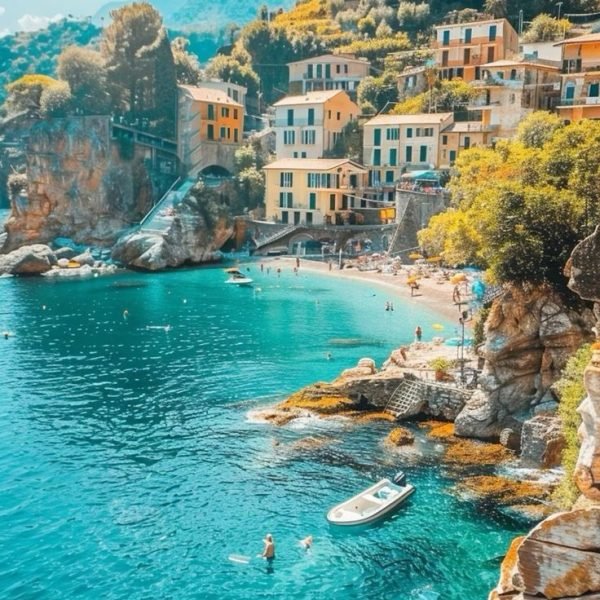
2.
Italian cuisine is celebrated worldwide, but nothing compares to experiencing it in its homeland. Each region boasts unique flavors and specialties: Neapolitan pizza, Bolognese pasta, Sicilian cannoli, and Tuscan wines. Food in Italy is more than sustenance-it’s a ritual, best enjoyed slowly and in good company. Markets brim with fresh produce, trattorias offer family recipes, and every meal is an invitation to savor the moment.
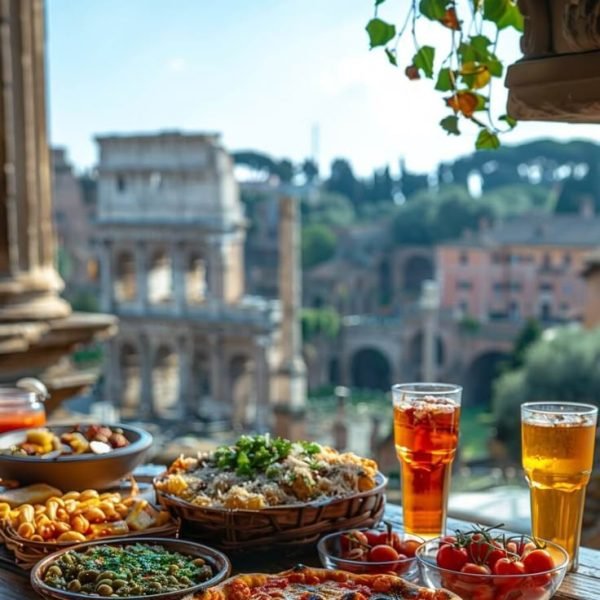
Planning Your Trip
Visa Information
Short-Stay Travel (Up to 90 Days)
For most travelers, Italy is part of the Schengen Area, which allows for short-term stays of up to 90 days within a 180-day period for tourism, business, or family visits. Citizens of the European Union, Schengen countries, and several visa-exempt nations (including the United States, Canada, Australia, New Zealand, Japan, and others) do not need a traditional visa for short visits. However, beginning in mid-2025, a new requirement comes into effect: the ETIAS (European Travel Information and Authorization System) travel authorization.
ETIAS Authorization
ETIAS is not a visa but an online travel authorization required for citizens from about 60 countries. The application is straightforward, costs €7, and is valid for three years or until your passport expires. All travelers, regardless of age, must apply; children under 18 and adults over 70 are exempt from the fee but still need authorization. You’ll need a passport valid for at least six months beyond your intended travel date, and it’s recommended to apply a few weeks before your trip for peace of mind. ETIAS allows you to travel freely throughout Italy and other Schengen countries for up to 90 days in any 180-day period.
Long-Stay Visas (More than 90 Days)
For stays longer than 90 days-such as work, study, or family reunification-you must apply for a national (Type D) visa before arrival. As of January 2025, Italy requires all long-term visa applicants to provide biometric data (fingerprints) at an Italian consulate or visa center. This new process enhances security but may add time and complexity to your application, especially for students and those living far from consular offices. After entering Italy with a long-stay visa, you must apply for a residence permit (permesso di soggiorno) within eight days of arrival.
General Visa Requirements
Regardless of your visa type, you typically need:
- A completed visa application form
- Recent passport-sized photos
- A valid passport (biometric, with at least six months’ validity)
- Proof of accommodation and travel itinerary
- Evidence of sufficient funds
- Travel medical insurance covering at least €30,000 for emergency medical care and repatriation
- Additional documents for specific visa types (e.g., invitation letters, proof of enrollment for students, work contracts, etc.).
Travel Insurance
While not mandatory for ETIAS, comprehensive travel health insurance is strongly recommended due to the high cost of medical care in Europe. For Schengen visa applicants, insurance is mandatory and must meet specific coverage criteria.
Best Time to Visit
Italy’s climate and cultural calendar offer something for every traveler year-round, but your experience will vary greatly depending on when you go.
Spring (March to May)
Spring is one of the best times to visit Italy. The weather is mild, flowers are in bloom, and popular sites are less crowded than in summer. This is an ideal season for city sightseeing, countryside drives, and exploring gardens or vineyards.
Summer (June to August)
Summer brings long, sunny days and lively festivals, but also peak tourist crowds and higher prices, especially in major cities and coastal areas. The Italian lakes, Amalfi Coast, and islands like Sicily and Sardinia are at their most vibrant, but be prepared for heat and busy attractions. Many Italians take holidays in August, so some smaller businesses may close in cities.
Autumn (September to November)
Autumn is another prime season, with warm days lingering into September and October, fewer crowds, and the grape harvest underway in wine regions. Food festivals abound, and the changing foliage in Tuscany and Umbria creates postcard-perfect landscapes.
Winter (December to February)
Winter is the quietest season for most of Italy, except for the Alps, which become a hub for skiing and snow sports. Cities like Rome, Florence, and Venice are less crowded, and you’ll enjoy festive Christmas markets and seasonal cuisine. Some coastal and rural areas may be quieter, with reduced services.
Special Events in 2025
Rome will host the Vatican’s Jubilee Year, drawing millions of pilgrims and tourists. Expect larger crowds at major religious and cultural sites, especially in Rome. Book accommodations and attraction tickets well in advance if you plan to visit during this period.
Getting To and Around
Getting to Italy
Italy is easily accessible from around the world, with several major international airports:
- Rome Fiumicino (Leonardo da Vinci)
- Milan Malpensa
- Venice Marco Polo
- Florence Peretola
- Naples Capodichino
Direct flights connect Italy to cities across Europe, North America, Asia, and beyond. Budget airlines also offer extensive routes within Europe.
By Train
Italy is well-connected to neighboring countries by high-speed trains, including direct services from France, Switzerland, Austria, and Germany. The train is a scenic and comfortable way to arrive, especially if you’re already in Europe.
By Car or Bus
Driving into Italy is straightforward from bordering countries, with well-maintained highways and border crossings. International bus services also connect Italy to major European cities, though journeys can be long.
By Sea
Ferries link Italy to Greece, Croatia, Spain, and North Africa, with major ports in Venice, Ancona, Bari, and Genoa.
Getting Around Italy
Italy’s transportation network is extensive, efficient, and offers options for every budget and itinerary.
Trains
The Italian train system is fast, reliable, and covers most of the country. High-speed trains (Frecciarossa, Frecciargento, Italo) connect major cities like Rome, Florence, Milan, Venice, and Naples in just a few hours. Regional trains serve smaller towns and scenic routes. Booking tickets in advance often yields the best prices.
Buses
Long-distance and regional buses fill in gaps where trains don’t reach, especially in rural or mountainous areas. Companies like FlixBus and local operators offer affordable and comfortable service.
Driving
Renting a car is ideal for exploring the countryside, hill towns, and regions like Tuscany, Umbria, or the Amalfi Coast. Italian roads are generally good, but driving in cities can be challenging due to traffic, narrow streets, and restricted zones (ZTL). Always check parking and driving regulations for your destination.
Domestic Flights
For longer distances, especially between the mainland and islands like Sicily or Sardinia, domestic flights are quick and often competitively priced.
Urban Transport
Cities have efficient public transport networks, including buses, trams, and metro systems. In cities like Venice, water buses (vaporetti) are the main mode of transport. Taxis are widely available but can be expensive; ride-sharing services operate in some cities.
Bicycles and Walking
Many Italian cities are best explored on foot or by bicycle. Historic centers are compact, and walking allows you to soak up the atmosphere, discover hidden corners, and enjoy local life.
Final Tips
- Book in Advance: Especially for trains, museums, and accommodations during peak seasons or special events.
- Travel Light: Cobblestone streets, train travel, and small hotels mean less is more when it comes to luggage.
- Stay Informed: Check for updates on entry requirements, especially with new systems like ETIAS and biometric border controls rolling out in 2025.
- Embrace Local Life: Take time to enjoy an espresso at a café, linger in a piazza, and immerse yourself in the rhythms of Italian culture.
With the right planning, your 2025 trip to Italy will be seamless, inspiring, and full of unforgettable moments. Buon viaggio!

Accommodation
Italy offers a wide spectrum of accommodation choices, catering to all tastes and budgets, from opulent five-star hotels to cozy countryside villas and charming boutique guesthouses. Each region presents unique lodging experiences that reflect its culture, history, and natural beauty.
Luxury Hotels and Historic Palaces
For travelers seeking indulgence and impeccable service, Italy’s luxury hotels are among the finest in the world. In Rome, the Hotel de Russie stands out with its elegant blend of modern design and classical charm, featuring exclusive gardens, a Michelin-starred restaurant, and a spa center. Its central location near Piazza del Popolo makes it ideal for exploring the Eternal City.
Venice’s Gritti Palace offers a unique stay in a 16th-century historic palace right on the Grand Canal. With antique furnishings, a luxurious spa, and exquisite local cuisine, it’s a favorite among celebrities and discerning travelers.
Along the Amalfi Coast, the Belmond Hotel Caruso in Ravello boasts breathtaking cliffside views and a spectacular infinity pool. Its exclusive ambiance, spa treatments using natural products, and private guided tours make it a perfect romantic retreat.
Lake Como’s Grand Hotel Tremezzo combines lakeside elegance with top-notch amenities, including three pools, a private beach, and gourmet restaurants. Its proximity to Bellagio and historic villas enhances its appeal for those seeking a refined vacation.
Boutique Hotels and Eco-Friendly Stays
For travelers who prefer intimate settings, boutique hotels like Borgo Santo Pietro in Siena provide an authentic Tuscan experience with organic gardens, a farm, and a cooking school. This eco-friendly hotel emphasizes peace, natural beauty, and slow living.
In Umbria, the Relais & Châteaux Borgo dei Conti offers tranquility and stunning views of rolling hills, with organic cuisine and guided tours that immerse guests in the local culture and landscape.
Budget and Mid-Range Options
Italy also caters well to travelers on a budget or those seeking mid-range comfort. Across cities and regions, you’ll find a variety of well-rated hotels, guesthouses, and apartments that combine convenience with charm.
For example, in popular destinations like Pisa, Florence, and Naples, budget hotels such as Hotel La Pace provide clean, comfortable rooms at affordable prices. Coastal towns and beach resorts often feature family-run hotels and B&Bs with excellent hospitality and local flavor.
Apartments, Villas, and Agriturismi
For longer stays or a more independent experience, renting an apartment or villa is a popular choice. Many travelers opt for agriturismi-working farms converted into guest accommodations-especially in Tuscany, Umbria, and Puglia. These offer a chance to live like a local, enjoy home-cooked meals, and explore rural Italy at a relaxed pace.
Tips for Booking Accommodation
- Book Early: Especially for luxury hotels and popular regions like the Amalfi Coast or Venice, reservations should be made months in advance.
- Consider Location: Staying in historic centers offers easy access to attractions but can be noisy and expensive. Suburban or countryside lodgings provide tranquility and often better value.
- Check Amenities: Depending on your preferences, look for hotels with pools, spas, or family-friendly services.
- Look for Authenticity: Boutique hotels and agriturismi often provide a more personalized and culturally rich experience.
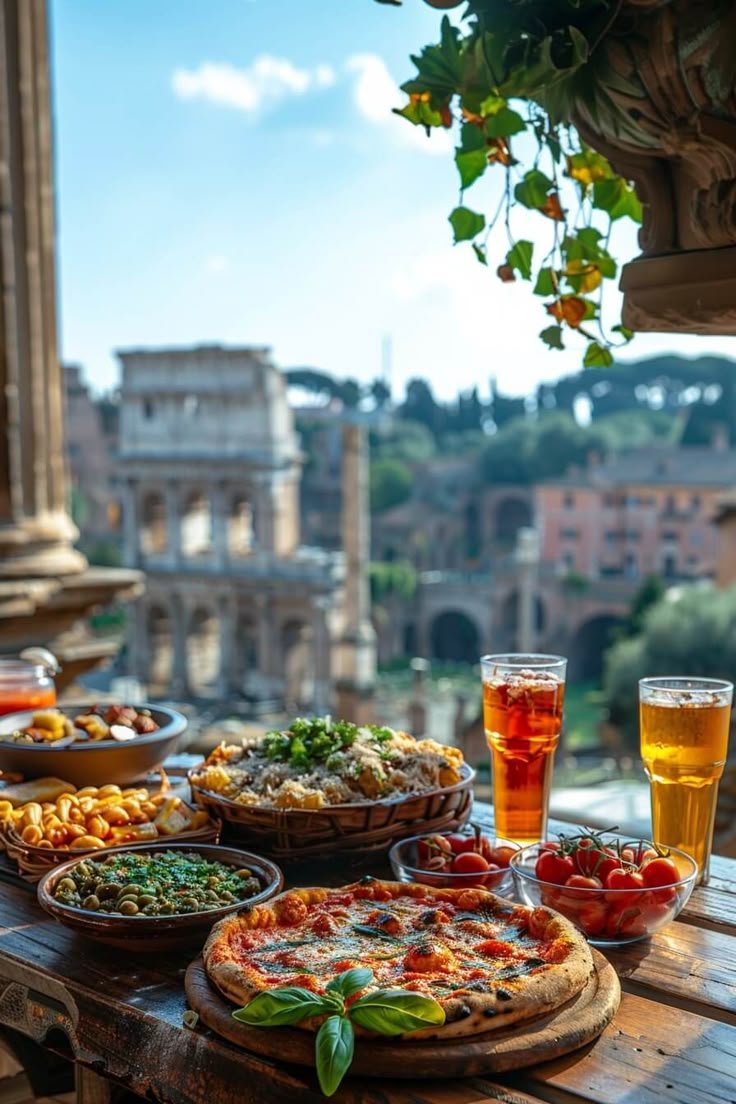
Food and Drink
Italy’s culinary reputation is legendary, and 2025 offers countless opportunities to savor its diverse flavors, regional specialties, and celebrated wines. Food in Italy is not just nourishment; it’s a cultural expression and a way of life.
Regional Culinary Highlights
Italian cuisine varies widely by region, reflecting local ingredients, traditions, and history.
- Northern Italy: Rich risottos, polenta, and hearty meat dishes dominate. In Lombardy, try saffron-infused risotto alla Milanese, while Piedmont is famous for truffles and Barolo wine.
- Central Italy: Tuscany and Umbria offer simple but robust flavors, with grilled meats, wild herbs, and extra virgin olive oil. Florence’s bistecca alla Fiorentina (T-bone steak) is a must-try.
- Southern Italy: Naples is the birthplace of pizza, and Campania’s fresh mozzarella di bufala is world-renowned. Sicily’s cuisine is a fusion of Mediterranean influences, featuring seafood, citrus, and sweet treats like cannoli.
- Coastal Areas: The Amalfi Coast and Liguria serve fresh seafood, often paired with local lemons or pesto Genovese.
Iconic Italian Dishes
- Pizza: From the classic Neapolitan pizza with its thin crust and fresh tomato sauce to Roman-style thin and crispy variants, pizza is a culinary icon.
- Pasta: Every region has its specialties-tagliatelle al ragù (Bolognese), pici from Tuscany, or trofie with pesto from Liguria.
- Gelato: Italian gelato is creamier and more intensely flavored than regular ice cream. Sampling gelato from artisanal shops is a daily ritual for many visitors.
- Coffee: Espresso is king in Italy. Enjoy it standing at the bar or leisurely at a café table. Cappuccinos are typically reserved for mornings.
Wine and Beverages
Italy is one of the world’s top wine producers, with celebrated varieties such as Chianti, Barolo, Brunello di Montalcino, and Prosecco. Wine tasting tours in Tuscany, Piedmont, and Veneto are popular activities.
Besides wine, Italians enjoy aperitivos-pre-dinner drinks like Aperol Spritz or Negroni-often accompanied by small snacks. Digestivi such as limoncello or grappa conclude meals.
Dining Culture and Tips
- Meals are Social Events: Italians savor meals slowly, often spending hours enjoying multiple courses with family or friends.
- Seasonal and Fresh Ingredients: Menus change with the seasons, emphasizing fresh, local produce.
- Try Local Specialties: Each town or region has unique dishes worth seeking out.
- Timing: Lunch is usually from 12:30 to 2:30 pm, and dinner starts around 7:30 to 9:30 pm. Many restaurants close between meals, especially in smaller towns.
- Reservations: Popular restaurants, especially in tourist hotspots, often require booking in advance.
Street Food and Markets
Italy’s street food scene offers delicious, casual options. In Rome, try supplì (fried rice balls), in Palermo, arancini (stuffed rice balls), and in Naples, pizza al taglio (pizza by the slice). Open-air markets provide fresh produce, cheeses, cured meats, and ready-to-eat specialties-perfect for a picnic or sampling local flavors on the go.

Must-See Attractions
- The Colosseum, Rome
No visit to Italy is complete without stepping inside the Colosseum, the iconic symbol of ancient Rome. This massive amphitheater once hosted gladiatorial contests and public spectacles, and today it stands as a testament to Roman engineering and history. Exploring its underground chambers and upper tiers offers a vivid glimpse into the past and the grandeur of the Roman Empire.
- Vatican City
The world’s smallest independent state, Vatican City is a treasure trove of art, religion, and history. Highlights include St. Peter’s Basilica, the Vatican Museums, and the Sistine Chapel, where Michelangelo’s breathtaking ceiling frescoes await. Climbing to the top of St. Peter’s Dome rewards visitors with panoramic views of Rome’s skyline.
- Leaning Tower of Pisa
Famous worldwide for its unintended tilt, the Leaning Tower of Pisa is a must-see architectural marvel. Located in the Piazza dei Miracoli, the square also hosts the beautiful Pisa Cathedral and Baptistery. Visitors enjoy the classic photo opportunity “holding up” the tower, alongside exploring the medieval charm of Pisa.
- Venice Canals
Venice’s labyrinth of canals is unlike any other cityscape on earth. A gondola ride along the Grand Canal reveals stunning palaces, historic bridges, and lively piazzas. St. Mark’s Basilica, with its blend of Gothic, Byzantine, and Renaissance architecture, and the Doge’s Palace are essential stops to soak in Venice’s unique atmosphere.
- Florence’s Uffizi Gallery
Home to one of the world’s most important collections of Renaissance art, the Uffizi Gallery in Florence showcases masterpieces by Botticelli, Leonardo da Vinci, Michelangelo, and Raphael. The gallery’s setting along the Arno River and its historic architecture add to the cultural experience.
- Amalfi Coast
The Amalfi Coast is a UNESCO World Heritage site famed for its dramatic cliffs, colorful villages like Positano and Amalfi, and crystal-clear Mediterranean waters. The coastline offers breathtaking views, delicious seafood, and charming streets perfect for wandering.
- Pompeii and Mount Vesuvius
The ancient city of Pompeii, preserved by volcanic ash from Mount Vesuvius’s eruption in 79 AD, allows visitors to walk through remarkably intact Roman streets, homes, and public buildings. Nearby, adventurous travelers can hike Mount Vesuvius itself for spectacular views over the Bay of Naples.
- Cinque Terre
This cluster of five vibrant fishing villages along the Ligurian coast is renowned for its colorful houses, terraced vineyards, and scenic hiking trails. Monterosso, Vernazza, Corniglia, Manarola, and Riomaggiore each offer unique charm, fresh seafood, and stunning sea vistas.
- The Pantheon, Rome
One of the best-preserved monuments of ancient Rome, the Pantheon impresses with its massive unreinforced concrete dome and oculus that floods the interior with natural light. Originally a temple to all gods, it now serves as a church and houses the tombs of notable figures like the artist Raphael.
- The Italian Lakes
Northern Italy’s lakes-Como, Garda, and Maggiore-offer serene landscapes, elegant villas, and charming towns. Lake Como is famous for its luxury resorts and celebrity visitors, while Lake Garda provides a mix of outdoor activities and historic sites.
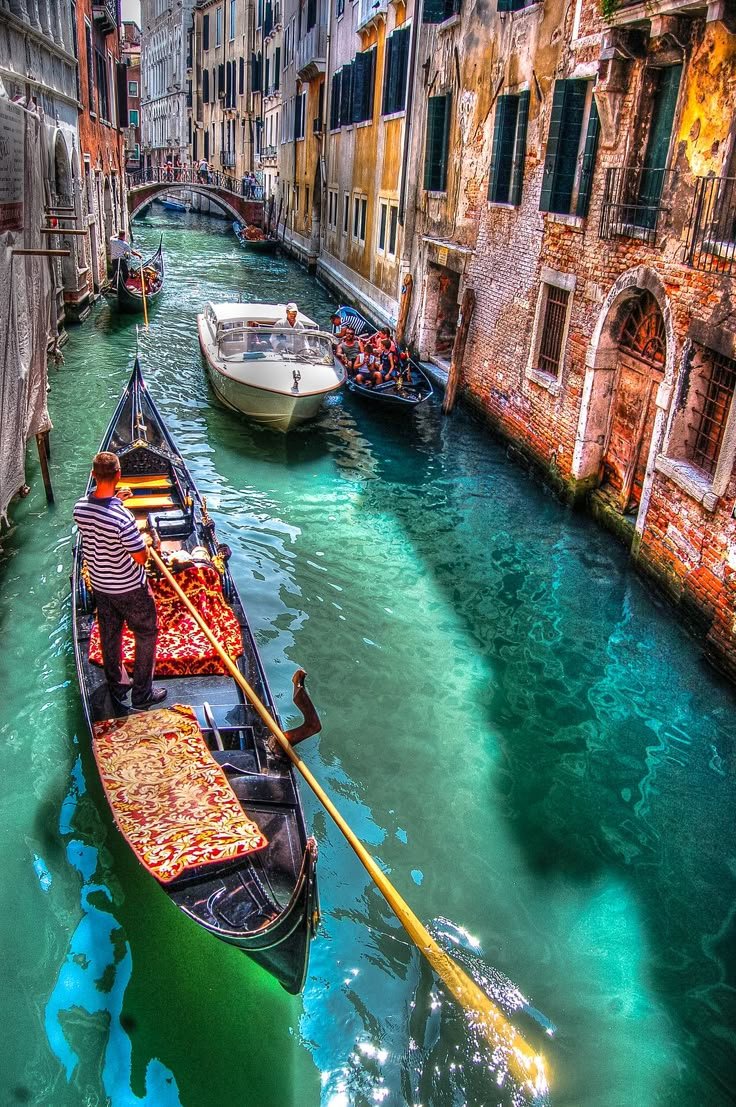
Must-Do Activities
- Explore Rome’s Ancient Ruins
Beyond the Colosseum, wander through the Roman Forum and Palatine Hill to experience the heart of ancient Rome. Walking these ruins brings history to life, with temples, basilicas, and marketplaces telling stories of the empire’s heyday.
- Take a Gondola Ride in Venice
Glide through Venice’s canals on a traditional gondola for a romantic and unforgettable perspective of the city. Evening rides offer a magical ambiance as the city lights reflect on the water.
- Attend a Wine Tasting in Tuscany
Tuscany’s rolling hills and vineyards are perfect for sampling world-class wines like Chianti, Brunello di Montalcino, and Vino Nobile di Montepulciano. Many wineries offer tours and tastings paired with local cheeses and olive oils.
- Hike the Cinque Terre Trails
The coastal trails connecting the five villages of Cinque Terre offer spectacular views of the Mediterranean and terraced vineyards. The Blue Trail (Sentiero Azzurro) is the most popular, but there are other paths for varying levels of hiking experience.
- Visit the Vatican Museums Early
Beat the crowds by booking early morning or late afternoon tours of the Vatican Museums. This allows for a more intimate experience of the Sistine Chapel, Raphael Rooms, and vast art collections.
- Drive or Sail Along the Amalfi Coast
Rent a car or take a boat tour to explore the Amalfi Coast’s cliffside villages and hidden coves. Stop in Positano for boutique shopping, Ravello for gardens and music festivals, and Amalfi for historic cathedrals and lively piazzas.
- Discover Renaissance Art in Florence
Beyond the Uffizi, visit the Accademia Gallery to see Michelangelo’s David, stroll across the Ponte Vecchio, and climb the Duomo’s dome for panoramic views of Florence’s terracotta rooftops.
- Sample Street Food in Naples
Naples is the birthplace of pizza, and tasting authentic Neapolitan pizza is a must. Also try street snacks like arancini (fried rice balls), sfogliatella pastries, and fresh seafood from local markets.
- Explore the Lakes by Boat
Rent a boat or take a ferry on Lake Como or Lake Garda to visit picturesque lakeside towns, historic villas, and gardens. The tranquil waters and mountain backdrops make for a relaxing day trip.
- Attend Local Festivals and Events
Italy’s vibrant festivals offer a window into its culture and traditions. In 2025, the Vatican Jubilee Year brings special religious events in Rome. Other highlights include Venice’s Carnival, Siena’s Palio horse race, and Umbria Jazz Festival.
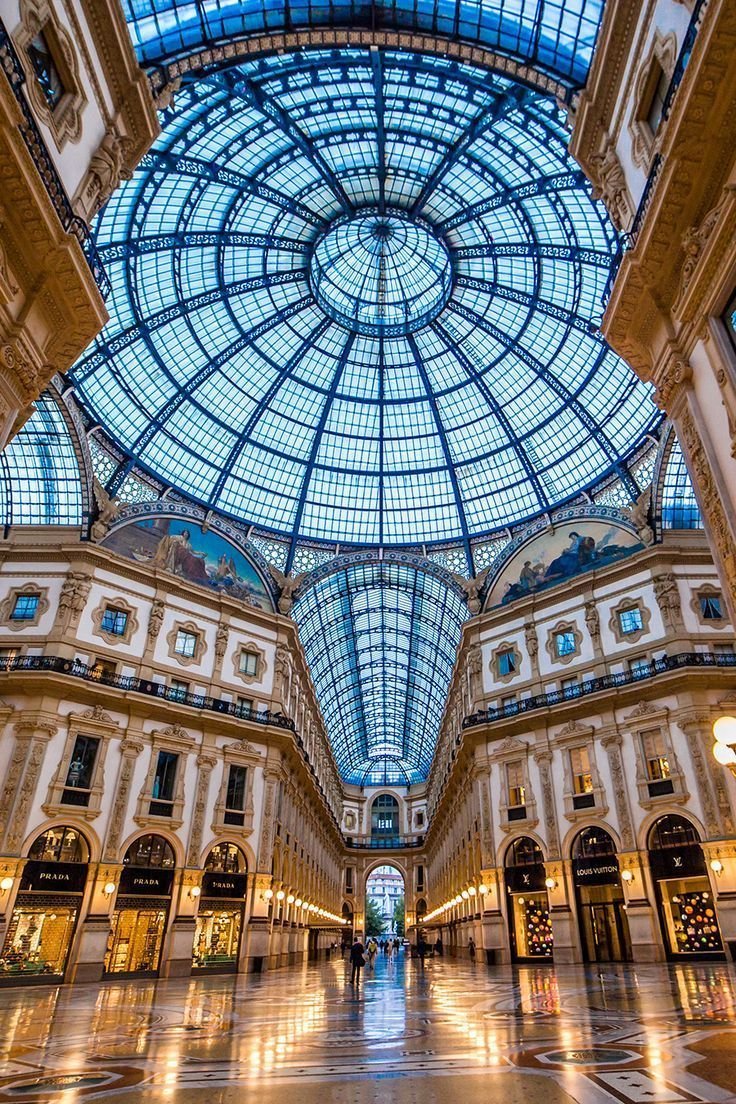
Travel Tips
Italy is a dream destination for millions of travelers each year, renowned for its art, architecture, cuisine, and vibrant culture. To make the most of your Italian adventure in 2025, it’s essential to stay informed about safety, respect local customs, and master a few language basics. Here’s an in-depth guide to help you travel smart, blend in, and enjoy every moment of your Italian journey.
Safety Advice
General Safety
Italy is generally safe for tourists, but, as with any popular destination, it’s important to remain vigilant-especially in crowded areas and tourist hotspots. Petty crime, such as pickpocketing and bag snatching, is the most common risk. Thieves often operate in busy places like train stations, public transport, major attractions, and bustling city centers in Rome, Venice, Florence, and Milan. Distraction techniques are frequently used, so always keep your belongings close, avoid displaying valuables, and use anti-theft bags or money belts.
Key Safety Tips:
- Keep your bags zipped and in front of you; don’t hang them on chair backs or leave them unattended.
- Carry only what you need for the day-leave extra cash, passports, and valuables in your hotel safe.
- Be wary of strangers offering help or creating distractions, as these can be tactics to divert your attention.
- Vehicle theft is a concern, especially with rental cars. Never leave valuables in your car, even in the trunk, and always lock your vehicle.
- Avoid accepting drinks from strangers and never leave your drink unattended in bars or clubs, as drink spiking can occur.
- If you’re approached by someone asking for help or directions-especially near your car-remain cautious and do not leave your vehicle unattended.
Terrorism and Civil Unrest
While the risk of terrorism in Italy is low, it is not absent. Major events, transport hubs, and crowded places can be targets. Remain aware of your surroundings, follow local news, and heed any security advisories, especially during large gatherings like the Jubilee Year in Rome in 2025. Protests and demonstrations can occur, particularly in large cities, sometimes leading to transportation disruptions. Avoid these gatherings and monitor local updates.
Health and Natural Hazards
Italy has high health and hygiene standards, but it’s wise to have travel insurance that covers medical care. Be aware of new health screening measures at ports of entry, which may cause delays. In summer, heatwaves are common, so stay hydrated and wear sun protection. In mountainous and coastal areas, monitor weather forecasts and follow local advice regarding floods, landslides, or wildfires.
Road and Water Safety
Road conditions in major cities are generally good, but driving can be challenging due to narrow streets, aggressive driving habits, and frequent congestion. In rural and southern areas, road maintenance may be poor, and signage can be lacking. Always drive defensively and familiarize yourself with local traffic laws. Motorcycles and scooters often weave through traffic unpredictably, and speeding is common.
If swimming or boating, respect warning flags and local advice. Coastal waters can be unpredictable, particularly in the Strait of Messina and the Strait of Bonifacio. Always use life jackets and avoid unfamiliar waters.
Local Customs
Respect for Tradition and Heritage
Italians are proud of their cultural heritage, and respecting local customs is key to a positive travel experience. Dress modestly when visiting churches or religious sites-cover shoulders and knees. In many towns, especially in the south, conservative dress is appreciated even outside religious settings.
Dining Etiquette
Meals are a cherished social event. Lunch is typically served from 12:30 to 2:30 pm, and dinner from 7:30 to 9:30 pm. Don’t rush through meals; savor the food and conversation. Wait for everyone to be served before eating, and it’s polite to say “Buon appetito!” before starting.
Tipping is not obligatory as service is often included in the bill (look for “coperto” or “servizio incluso”), but leaving small change or rounding up is appreciated for good service.
Public Behavior and Laws
Italy has introduced stricter regulations to protect its cultural sites and manage overtourism:
- Do not swim in Venice’s canals, sit on the Spanish Steps in Rome, or climb on fountains-these actions can result in hefty fines.
- In Venice, day-trippers must pay an entry fee during peak periods. Picnicking in public spaces, pausing too long on bridges, or riding bikes in the city center are also prohibited.
- Drinking alcohol on the street is restricted in several cities during certain hours. In Milan, smoking is banned in outdoor public areas like parks and playgrounds.
- Do not attach “love locks” to bridges or monuments, and never carve your name into historic sites.
- Always use public drinking fountains correctly-never put your mouth directly on the spout.
Sustainable and Responsible Tourism
Respect the environment and local communities. Dispose of litter properly, avoid single-use plastics, and use eco-friendly transport options where available. Many cities are rolling out green initiatives, including electric buses and bike-sharing programs.
Shopping and Bargaining
Prices are generally fixed in shops, but bargaining is acceptable in markets. Always greet shopkeepers with a friendly “Buongiorno” (good morning) or “Buonasera” (good evening) before asking questions or making purchases.
Language Basics
While English is widely spoken in tourist areas, learning a few Italian phrases will enhance your experience and is appreciated by locals. Italians value politeness and friendliness, so even simple greetings go a long way.
Essential Phrases:
- Hello/Good morning: Buongiorno
- Good evening: Buonasera
- Goodbye: Arrivederci
- Please: Per favore
- Thank you: Grazie
- Yes/No: Sì / No
- Excuse me/Sorry: Mi scusi / Scusa
- Do you speak English?: Parla inglese?
- I don’t understand: Non capisco
- How much does it cost?: Quanto costa?
- Where is…?: Dov’è…?
- Bathroom: Bagno
- Water: Acqua
Pronunciation Tips:
- The letter “c” before “i” or “e” is pronounced like “ch” in “cheese.”
- “G” before “i” or “e” is pronounced like “j” in “jeans.”
- “Gli” is pronounced like “lli” in “million.”
Politeness Counts
Always address people formally (using “Lei” instead of “tu”) unless invited to do otherwise. In shops, restaurants, and public places, greet staff upon entering and thank them when leaving.
Final Tips for a Smooth Journey
Traveling in Italy in 2025 is an enriching experience, but a little preparation goes a long way. Stay alert to your surroundings, respect local customs and laws, and make an effort with the language. By doing so, you’ll not only stay safe but also enjoy deeper connections and more authentic moments throughout your Italian adventure. Buon viaggio!

